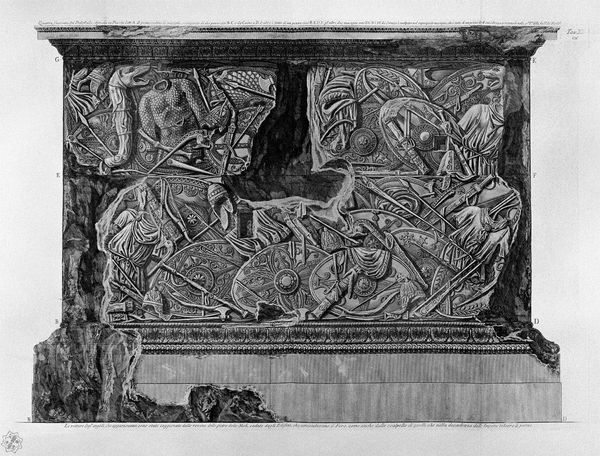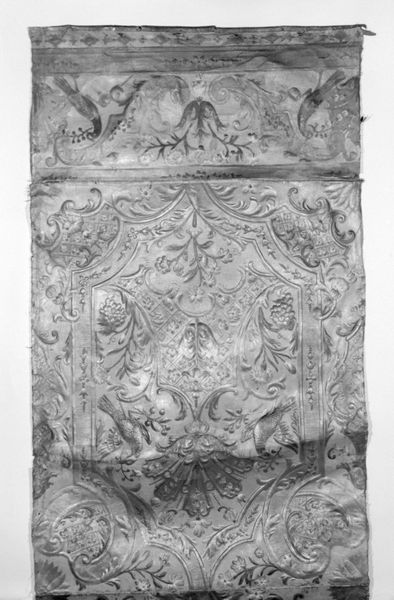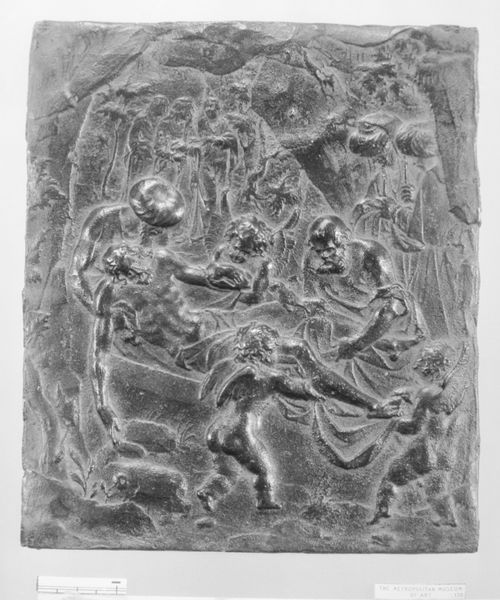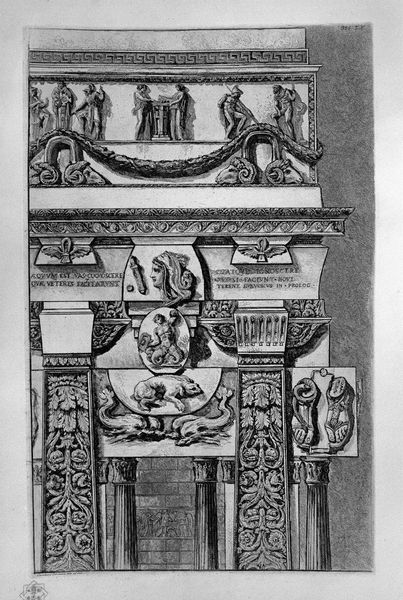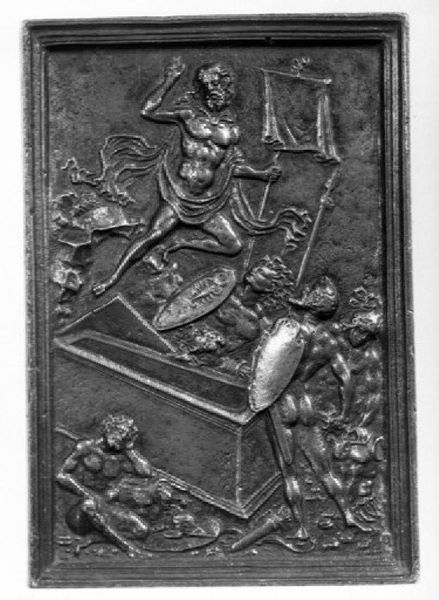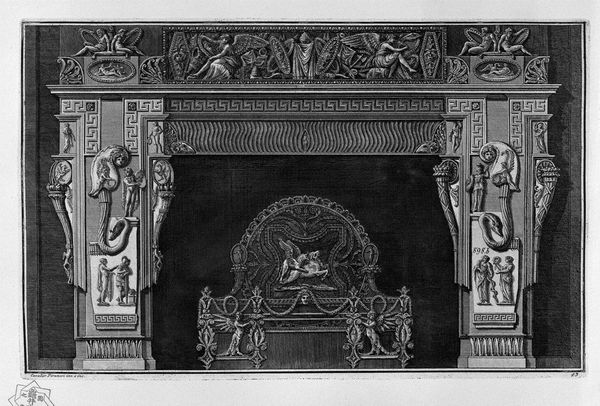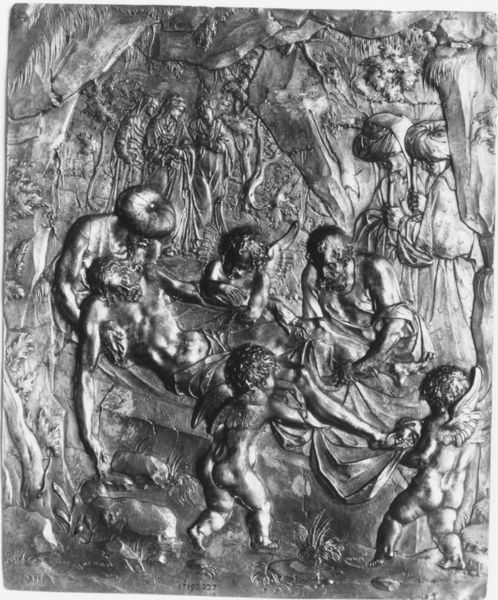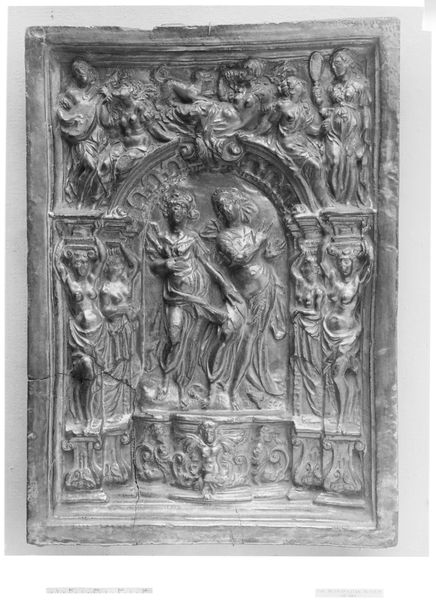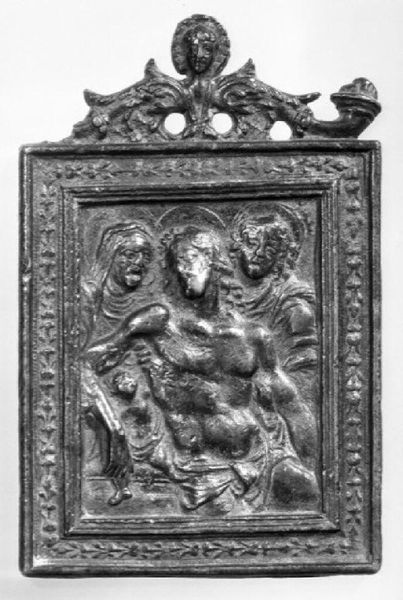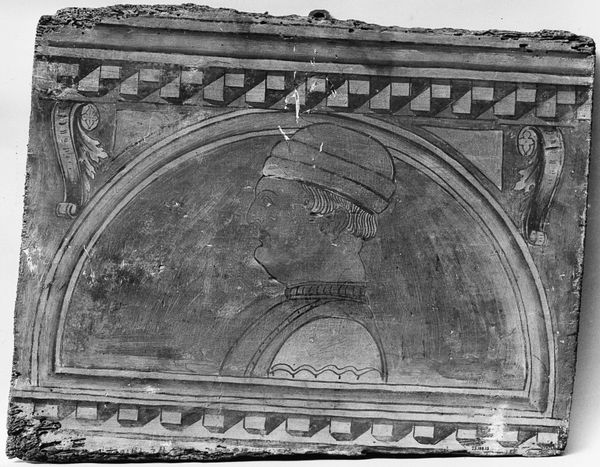
carving, print, etching, sculpture
#
carving
# print
#
etching
#
sculpture
#
ancient-mediterranean
#
column
#
sculpture
Copyright: Public domain
Editor: This detailed etching, "Fourth side of the pedestal of the same column" by Giovanni Battista Piranesi, shows what looks like an extremely crowded battlefield with carvings of weaponry. I'm struck by how chaotic yet controlled it feels. How do you interpret this work, thinking about its original context? Curator: It's fascinating, isn't it? Think about the 18th century when Piranesi was working. Antiquarianism was all the rage, with elites eagerly acquiring and displaying classical art. Piranesi capitalizes on this, feeding the market for Roman grandeur. But this isn't just a straightforward reproduction. He's reconstructing, interpreting, even amplifying the drama of the past. Do you notice how the sheer density of objects, the mass of arms and shields, almost overwhelms the viewer? Editor: Yes, it’s almost suffocating! Is that intentional, do you think? Curator: Absolutely! It speaks to a fascination with the power and might of the Roman Empire, but also perhaps a commentary on its potential for collapse, weighed down by its own material excess. Also consider the act of etching itself. Reproducing something so monumental in a portable print makes it accessible, democratizing a symbol of power even as it reinforces its importance. What do you think this tension might have meant for contemporary audiences? Editor: So it's both celebrating and, in a way, critiquing Roman power by making it both grand and consumable. I hadn’t thought about the impact of the medium itself. Curator: Precisely. And that tension, between reverence and critique, fueled a lot of art production at the time. Understanding that push and pull gives us a clearer sense of the social role art played. Editor: I’ll definitely look at artwork from that era in a different light now. It is like consuming ancient power.
Comments
No comments
Be the first to comment and join the conversation on the ultimate creative platform.
